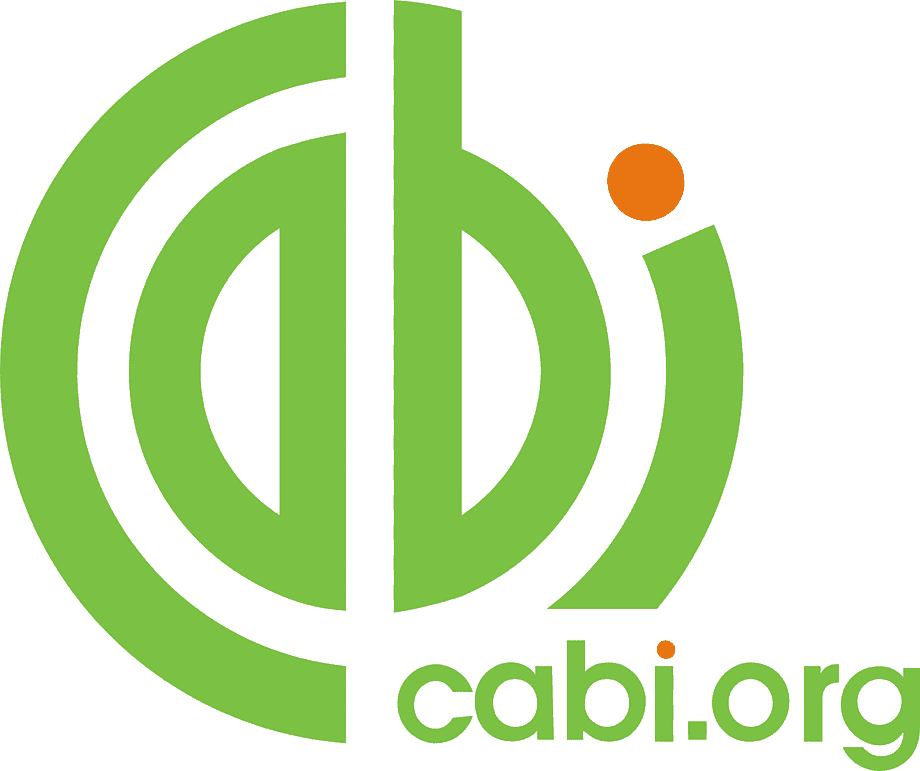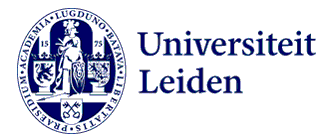Variasi Genotipe dan Alel Gen PIT1|HinfI pada Sapi Perah Friesian Holstein Lokal di Boyolali Jawa Tengah
Genotype and Allelic Variations of the PIT1|HinfI Gene in Local Friesian Holstein Dairy Cows in Boyolali, Central Java
DOI:
https://doi.org/10.46549/jipvet.v12i1.201Keywords:
frekuensi genotipe dan alel, gen PIT1, sapi Friesian Holstein lokal, Genotype and allele frequency, Local FH dairy cattle, PIT1 geneAbstract
Abstract
The pituitary-specific transcription factor 1 (PIT1) gene, known also as pituitary-specific positive transcription factor 1 (POU1F), is one of the genes which has the responsibility to control milk quality and milk production. Using this gene information as selection criteria were expected to be able to improve milk production in an efficient and accurate way. This study was aimed to determine the genotype variation of the PIT1 gene in Friesian Holstein (FH) dairy cattle in Boyolali District Central Java. In total 20 blood samples as DNA source were collected from local FH cattle. To determine the PIT1 genotype and allele variation, Polymerase Chain Reaction-Restriction Fragment Length Polymorphism (PCR-RFLP) method was employed which started by DNA extraction, PCR, then DNA digestion using HinfI restriction enzyme. Following the genotyping process, genotype and allele frequencies were calculated. As the result, it was found 3 types of PIT1 genotype namely AA, AB, and BB; its frequencies were 0.1, 0.3, and 0.6, respectively. The allele type was found A and B, and the frequencies were 0.25 and 0.75 respectively. According to the study, it is concluded that the highest genotype of PIT1 in local FH dairy cattle was BB type, and the allele was B type.
Keywords: Genotype and allele frequency; Local FH dairy cattle; PIT1 gene
Abstrak
Gen Pituitary-Specific Transcription Factor 1 (PIT1) atau dikenal juga dengan nama pituitary-specific positive transcription factor 1 (POU1F1), merupakan salah satu gen yang bertanggung jawab pada kualitas dan kemampuan produksi susu sapi. Oleh karena itu, seleksi menggunakan gen ini diharapkan dapat meningkatkan produksi susu secara akurat dan efisien. Tujuan dari penelitian ini adalah untuk menentukan variasi genotip gen PIT1 pada sapi perah Friesian Holstein di Kabupaten Boyolali, Jawa Tengah. Penelitian ini menggunakan metode Polymerase Chain Reaction-Restriction Fragment Length Polymorphism (PCR-RFLP) untuk menentukan variasi genotipe dan alel gen PIT1. Sampel yang digunakan berasal dari darah 20 ekor sapi Friesian Holstein (FH) lokal di wilayah Kabupaten Boyolali, Jawa Tengah. Penelitian diawali dengan ekstraksi DNA yang dilanjutkan dengan amplifikasi fragmen DNA gen PIT1 pada reaksi PCR. Genotyping dilakukan dengan mendigesti produk PCR menggunakan enzim restriksi HinfI. Analisis variasi genotipe kemudian digunakan untuk menentukan frekuensi genotipe dan frekuensi alel gen PIT1. Hasil amplifikasi fragmen gen menghasilkan produk PCR dengan ukuran 451 bp dan berdasarkan hasil sequencing merupakan fragmen gen PIT1 ekson 6. Sebanyak 3 genotipe gen PIT1 yang terdeteksi pada populasi sampel sapi FH lokal yaitu AA, AB, dan BB dengan frekuensi genotipe masing-masing 0,1; 0,3; dan 0,6. Hasil frekuensi alel yang diperoleh untuk alel A dan B masing-masing sebesar 0,25 dan 0,75. Berdasarkan penelitian ini maka dapat disimpulkan bahwa gen PIT1 pada populasi sapi perah FH lokal di Boyolali memiliki frekuensi genotipe terbesar yaitu BB, dengan frekuensi alel terbesar adalah B.
Kata kunci: Frekuensi genotipe dan alel; Gen PIT1; Sapi friesian holstein lokal
Downloads
References
Ahmadi MM, Mirzaei A, Sharifiyazdi H, Hajibemani A, Rowshan AG. 2015. Pituitary-specific transcription factor 1 (Pit-1) polymorphism and its association on milk production and some reproductive performance in Holstein dairy cows. Rev. Med. Vet. (Toulouse). 166, 127–131.
Badan Pusat Statistik, 2020. Peternakan Dalam Angka 2020. BPS-RI, Jakarta.
Bohlouli M, Alijani S. 2012. Genotype by Environment Interaction for Milk Production Traits in Iranian Holstein Dairy Cattle using Random Regression Model. Livest. Res. Rural Dev. 24, 1–7.
Cohen LE, Wondisford FE, Radovick S. 1996. Role of Pit-1 in The Gene Expression of Growth Hormone, Prolactin, and Thyrotropin. Endocrinol. Metab. Clin. North Am. 25, 523–540. https://doi.org/10.1016/S0889-8529(05)70339-X
Corrales-Álvarez JD, Cerón-Muñoz MF, Cañas-Álvarez JJ, Acevedo-Valladarez C, Sepúlveda-Restrepo JC, Calvo-Cardona SJ, Moreno-Ochoa M. 2010. Estudio Del Polimorfismo Hinfi Del Gen Pit-1 Y Su Asociación Con Características De Tipo, Producción De Leche Y Días Abiertos De Vacas Holstein En El Departamento De Antioquia, Colombia. Actual. Biológicas 32, 139–145.
Cosier V, Croitoriu V. 2012. Research concerning the polymorphic expression of Pit-1 and STAT5A genes in cattle. Bull. Univ. Agric. Sci. Vet. Med. Cluj-Napoca - Anim. Sci. Biotechnol. 69, 70–79. https://doi.org/10.15835/buasvmcn-asb:69:1-2:8391
Doosti A, Arshi A, Momeni B. 2011. Molecular Study of PIT1 Gene Polymorphism in Holstein and Iranian Native Cattle. African J. Agric. Res. 6, 4467–4470. https://doi.org/10.5897/AJAR11.178
Dybus A, Szatkowska I, Czerniawska-Piątkowska E, Grzesiak W, Wójcik J, Rzewucka E, Zych S. 2004. PIT1-HinfI Gene Polymorphism and Its Associations with Milk Production Traits in Polish Black-and-White Cattle. Arch. Anim. Breed. 47, 557–563. https://doi.org/10.5194/aab-47-557-2004
Edriss MA, Edriss V, Rahmani HR. 2009. Association of PIT-1 Gene Polymorphism with Birth Weight, Milk and Reproduction Traits in Isfahan Holstein Cows (Brief Report). Arch. Anim. Breed. 52, 445–447. https://doi.org/10.5194/aab-52-445-2009
Fikse WF, Rekaya R, Weigel KA. 2003. Genotype x Environment Interaction for Milk Production in Guernsey Cattle. J. Dairy Sci. 86, 1821–1827. https://doi.org/10.3168/jds.S0022-0302(03)73768-0
Haile-Mariam M, Carrick MJ, Goddard ME. 2008. Genotype by environment interaction for fertility, survival, and milk production traits in Australian dairy cattle. J. Dairy Sci. 91, 4840–4853. https://doi.org/10.3168/jds.2008-1084
Hoseinzadeh ZE, Mohammadabadi MR, Esmailizadeh AK, Khezri A. 2015a. Association of PIT1 Gene and Milk Protein Percentage in Holstein cattle. J. Livest. Sci. Technol. 3, 41–49.
Hoseinzadeh ZE, Mohammadabadi MR, Koshkuieh AE, Khezri A, Noori AN. 2015b. Association of PIT1 Gene with Milk Fat Percentage in Holstein Cattle. Iran. J. Appl. Sci. 5, 575–582.
Hunt SE, McLaren W, Gil L, Thormann A, Schuilenburg H, Sheppard D, Parton A, Armean IM, Trevanion SJ, Flicek P, Cunningham F. 2018. Ensembl Variation Resources. Database J. Biol. Databases Curation 2018, 1–12. https://doi.org/10.1093/database/bay119
Miglior F, Fleming A, Malchiodi F, Brito LF, Martin P, Baes CF. 2017. A 100-Year Review: Identification and Genetic Selection of Economically Important Traits in Dairy Cattle. J. Dairy Sci. 100, 10251–10271. https://doi.org/10.3168/jds.2017-12968
Misrianti R, Sumantri C, Farajallah A. 2010. Polymorphism Identification of Pit1 Gene in Indonesian Buffaloes (Bubalus bubalis) and Holstein-Friesian Cows. Media Peternak. 33, 131–136. https://doi.org/10.5398/medpet.2010.33.3.131
Nauta WJ, Veerkamp RF, Brascamp EW, Bovenhuis H. 2006. Genotype by Environment Interaction for Milk Production Traits Between Organic and Conventional Dairy Cattle Production in The Netherlands. J. Dairy Sci. 89, 2729–2737. https://doi.org/10.3168/jds.S0022-0302(06)72349-9
Nei M, Kumar S. 2000. Molecular Evolution and Phylogenetics. Oxford University Press, New York.
Savage JJ, Hunter CS, Clark-Sturm SL, Jacob TM, Pfaeffle RW, Rhodes SJ. 2007. Mutations in The LHX3 Gene cause Dysregulation of Pituitary and Neural Target Genes that Reflect Patient Phenotypes. Gene 400, 44–51. https://doi.org/10.1016/j.gene.2007.05.017
Senger PL. 2005. Pathway to Pregnancy and Parturition, 2nd ed. Pullman, Washington.
Stančeková K, Vašíček D, Peškovičová D, Bulla J, Kúbek A. 1999. Effect of Genetic Variability of the Porcine Pituitary-Specific Transcription Factor (PIT-1) on Carcas Traits in Pigs. Anim. Genet. 30, 313–315. https://doi.org/10.1046/j.1365-2052.1999.00484.x
Sutarno. 2010. Genetic variations among Indonesian native cattle breeds based on polymorphisms analysis in the growth hormone loci and mitochondrial DNA. Biodiversitas 11, 1–4. https://doi.org/10.13057/biodiv/d110101
Woollard J, Schmitz CB, Freeman AE, Tuggle CK. 1994. Rapid Communication: HinfI polymorphism at the bovine PIT1 locus. J. Anim. Sci. 72, 3267–3267. https://doi.org/10.2527/1994.72123267x
Wulandari S, Bowo PA. 2019. Pengaruh Produksi, Konsumsi, dan Harga Susu Sapi Nasional Terhadap Impor Susu Sapi. Econ. Educ. Anal. J. 8, 1130–1146. https://doi.org/10.15294/eeaj.v13i2.35717
Zakizadeh S, Reissmann M, Rahimi G, Javaremi AN, Reinecke P, Mirae-Ashtiani SR, Shahrbabak MM. 2007. Polymorphism of The Bovine POU1F1 Gene: Allele Frequencies and Effects on Milk Production in Three Iranian Native Breeds and Holstein Cattle of Iran. Pakistan J. Biol. Sci. 10, 2572–2578. https://doi.org/10.3923/pjbs.2007.2575.2578
Zhang C, Liu B, Chen H, Lan X, Lei C, Zhang, Z, Zhang R. 2009. Associations of a Hinf I PCR-RFLP of POU1F1 Gene with Growth Traits in Qinchuan Cattle. Anim. Biotechnol. 20, 71–74. https://doi.org/10.1080/10495390802640462
Downloads
Published
How to Cite
Issue
Section
License
Copyright (c) 2022 Sigit Prastowo, Shavya Sarah Saviera, Galih Pambuko, Rebecca Vanessa, Purwadi Purwadi, Ari Susilowati, Sutarno Sutarno

This work is licensed under a Creative Commons Attribution-NonCommercial-ShareAlike 4.0 International License.
License and Copyright Agreement
In submitting the manuscript to the journal, the authors certify that:
- They are authorized by their co-authors to enter into these arrangements.
- The work described has not been formally published before, except in the form of an abstract or as part of a published lecture, review, thesis, or overlay journal. Please also carefully read Jurnal Ilmu Peternakan dan Veteriner Tropis (Journal of Tropical Animal and Veterinary Science) Posting Your Article Policy at https://journal.fapetunipa.ac.id/index.php/JIPVET/publicationethics
- That it is not under consideration for publication elsewhere,
- That its publication has been approved by all the author(s) and by the responsible authorities “tacitly or explicitly“ of the institutes where the work has been carried out.
- They secure the right to reproduce any material that has already been published or copyrighted elsewhere.
- They agree to the following license and copyright agreement.
Copyright
Authors who publish with Jurnal Ilmu Peternakan dan Veteriner Tropis (Journal of Tropical Animal and Veterinary Science) agree to the following terms:
- Authors retain copyright and grant the journal right of first publication with the work simultaneously licensed under a Creative Commons Attribution License (CC BY-NC-SA 4.0) that allows others to share the work with an acknowledgment of the work's authorship and initial publication in this journal.
- Authors are able to enter into separate, additional contractual arrangements for the non-exclusive distribution of the journal's published version of the work (e.g., post it to an institutional repository or publish it in a book), with an acknowledgment of its initial publication in this journal.
- Authors are permitted and encouraged to post their work online (e.g., in institutional repositories or on their website) prior to and during the submission process, as it can lead to productive exchanges, as well as earlier and greater citation of published work.

This work is licensed under a Creative Commons Attribution-NonCommercial-ShareAlike 4.0 International License.





























.png)
